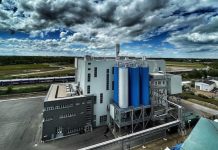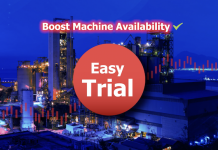You get great solutions in a Plant Wellness Way reliability analysis. Reliability Centred Maintenance was not a bad way to develop maintenance strategy, but it wasn’t the best way to create tactics for high reliability plant and equipment.
Plant Wellness Way is scientifically based. Following asset criticality we determine the critical components within the assets (those parts that stop the asset working if they fail). We use the parts list and assembly drawing of every critical asset to identify each parts’ likelihood of failure during operation and determine its reliability strategy.
The big problem with Reliability Centered Maintenance (RCM) is that it is focused on developing maintenance strategy and not on identifying the best reliability creation tactics.
Invented in the 1960’s the RCM approach is now old school. It is what everyone does days to develop maintenance strategy. So you’ll get the performance that everyone else gets, which is plenty of maintenance tasks to do, but not you’ll not get great reliability performance.
It’s exactly why the Plant Wellness Way was developed—the usual RCM ‘stuff’ does not work so well if you want high reliability equipment.
The typical Reliability Centred Maintenance approach would be as follows:
- Develop the Equipment List
- Perform Equipment Criticality Analysis – involving all key stakeholders
- Perform FMEA – Failure Modes Effects Analysis – again involving all key stakeholders, including the equipment manufacturers and their equipment history to determine the functional failure modes (what ways can it fail?), failure causes (why did it fails?) and operational effects (what were the effects/impacts of the failure?). This can be an RCM Blitz.
- Establish the appropriate maintenance strategy for critical equipment based on (2) and (3) above i.e. Run to Failure, Interval Based (PM) Maintenance or CBM (Condition Based Maintenance), also known as PdM (Predictive Maintenance)
- Establish the appropriate PMs, intervals and requirements (PMO) PM Optimization and CBM technologies and requirements based on (4) above
- Recommend suitable CBM service and equipment providers and estimated costs
- Develop the Implementation Plan
- Implement and follow up to ensure proper and full adoption of the maintenance strategies
The Plant Wellness Way to Create World Class Reliability Strategy
Being ‘typical’ and using Reliability Centered Maintenance does not get you the high plant and equipment reliability you want.
At LRS Consulants (Australia) we don’t use the standard RCM approach. Instead we apply the Plant Wellness Way method and techniques. Taking the list above we’ve imbedded a short description of the PWW equivalent to show you how we develop reliability creation strategy and not only maintenance strategy.
- Develop the Equipment ListIn PWW we get equipment lists from the P&ID’s. But we also need to have the equipment maintenance manuals, as we need the parts list and assembly drawings.
- Perform Equipment Criticality Analysis – involving all key stakeholdersWe do criticality much the same as standard criticality, but as part of the DOCTOR (Design and Operations Costs Totally Optimise Risk) process applied during the plant design process. We must be part of the project design team—DOCTOR will bring the greatest benefit if used at the design stage of the lifecycle! We also map criticality onto a risk matrix, which we then use to prove the final proposal has given us the optimal operating risk.
- Perform FMEA – Failure Modes Effects Analysis – again involving all key stakeholders, including the equipment manufacturers and their equipment history to determine the functional failure modes (what ways can it fail?), failure causes (why did it fails?) and operational effects (what were the effects/impacts of the failure?). This can be an RCM Blitz.We apply Physics of Failure Analysis on the equipment’s’ Bill of Material instead of using FMEA/RCM.
- Establish the appropriate maintenance strategy for critical equipment based on (2) and (3) above i.e. Run to Failure, Interval Based (PM) Maintenance or CBM (Condition Based Maintenance), also known as PdM (Predictive Maintenance)The maintenance strategies also are outputted from the Physics of Failure Analysis, and in addition you get powerful reliability growth tactics.
- Establish the appropriate PMs, intervals and requirements (PMO) PM Optimization and CBM technologies and requirements based on (4) aboveIn PWW we use Stress to Process Model to arrive at the maintenance, operations and engineering tasks that people in each of these groups are responsible to do.
- Recommend suitable CBM service and equipment providers and estimated costsWe will also set the equipment health standards that plant and machines are to be sustained at by contractors, maintainers and operators. This is how we imbed world class performance into your company!
- Develop the Implementation PlanWe will also need to develop the maintenance and asset management processes and ACE 3T procedures for operations and maintenance.In PWW we also include practice training and people must get a ‘certification to run/maintain the plant’ before they are allowed to run equipment or maintain the plant.
- Implement and follow up to ensure proper and full adoption of the maintenance strategiesWe don’t walk away at the end. We want a lasting partnership with the site management and people.
All the necessary methods, templates and solutions have been developed to use Plant Wellness Way reliability strategy on your operation.
There is no boundary to the use of PWW in providing the reliability strategy for every asset in your operation It applies not only to the production equipment, but also the building structure, roadways, the site services and utilities, like electrical power supply and distribution, water supply and distribution, etc.
Just give us a list of every asset you want us to analyse and propose a reliability strategy for—there is no limit or asset too complex to apply PWW.
With that asset list, and a clear indication of our scope-of-work boundary, we can agreed dates our deliverables are to be provided. We want to be sure we have the time and resources to do a top class job of operational risk analysis and high reliability strategy selection for you, so you get the best reliability creation solution for your operation.
Your return on investment from using PWW analysis will be unbelievably high. By using the Plant Wellness Way approach you get lasting maintenance and operational costs savings and powerful reliability growth that will greatly lower the maintenance cost per unit of production.
Mike Sondalini
Lifetime Reliability Solutions HQ










